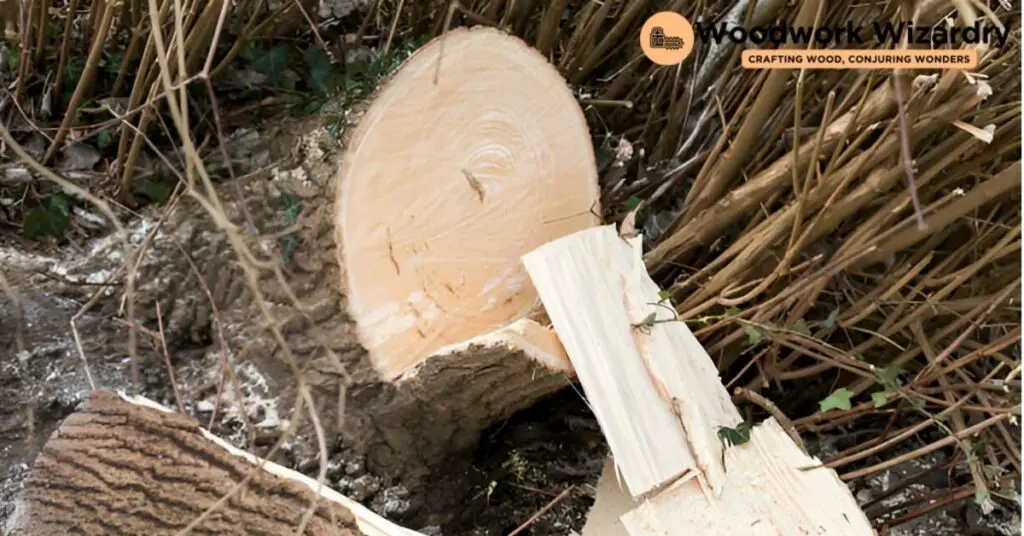There’s something truly special about working with green wood. It’s not just the fresh scent or the tactile pleasure of shaping something straight from nature—it’s also the connection to traditional craftsmanship. However, anyone who’s dabbled in this art knows the frustration of seeing beautiful pieces split as they dry. It’s a common challenge, but don’t worry, we’ve got some tricks up our sleeves.
We’re here to share our best tips on how to keep green wood from splitting. Whether you’re a seasoned woodworker or a curious newbie, these strategies will help you preserve the integrity of your wood projects. From understanding the science behind wood drying to practical, hands-on techniques, we’ll guide you through the essentials. Let’s dive in and explore how to make your green wood projects last, keeping them as stunning as the day you carved them.
Understanding Why Green Wood Splits
Diving deeper into the science behind wood drying offers insights into why green wood often splits. Recognizing the factors at play paves the way for effective preventive measures.
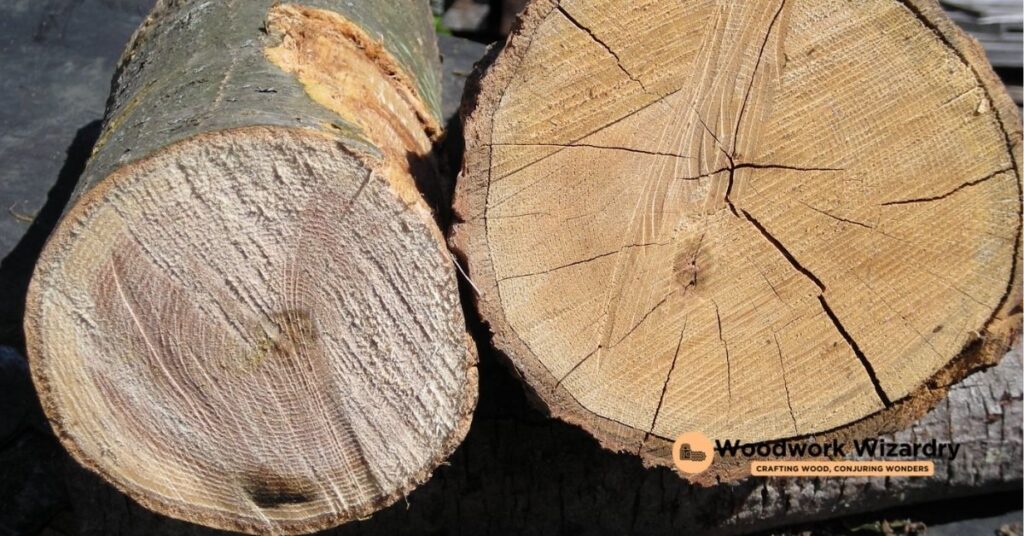
The Role of Moisture Content
Green wood refers to freshly cut wood that has not yet undergone the drying process. This wood type retains a high moisture content, with water present both in its cell walls and the spaces between cells. As green wood dries, the moisture in the spaces evaporates first, causing the wood to shrink unevenly. This uneven shrinkage generates internal stresses, making green wood more prone to splitting. Ensuring a balanced drying process helps mitigate these stresses, preserving the wood’s integrity.
External Factors Influencing Splitting
Several external factors exacerbate the tendency of green wood to split. These include:
- Temperature: Higher temperatures accelerate the drying process, increasing the risk of splitting as the outer layers of the wood dry faster than the inner ones.
- Humidity: Low humidity levels also quicken the drying process, while high humidity can slow it down, affecting the wood’s drying rate.
- Airflow: Adequate airflow is crucial in evenly drying out the wood but too much can lead to rapid surface drying and subsequent splitting.
- Wood Species: Different species of wood have varying densities and grain structures, influencing how they react to the drying process. Dense woods with tight grain patterns, such as oak or maple, tend to be more susceptible to splitting.
By understanding these factors, woodworkers can adopt strategies to control the drying process more effectively, reducing the risk of splitting in green wood projects.
Materials and Tools Needed
Transitioning from the science and challenges of working with green wood, we need the right materials and tools to effectively manage and mitigate the splitting. With the proper setup, preserving the integrity of green wood becomes a straightforward process.
Essential Tools for Handling Green Wood
To work effectively with green wood and prevent splitting, obtaining specific tools is crucial.
- Sharp Chisels and Gouges: Enables precise cuts that minimize stress on the wood, reducing the likelihood of splitting. For instance, a finely sharpened chisel is ideal for delicate work on green wood.
- Fine-toothed Saws: Ensures smooth and controlled cuts. A dovetail saw, known for its fine teeth, makes accurate cuts pivotal for maintaining the wood’s integrity.
- Moisture Meter: Measures the wood’s moisture content, providing insight into the drying process. A digital moisture meter offers immediate readings, allowing for quick adjustments to the environment or the wood’s treatment.
- Lathe: A critical tool for turning green wood. A variable-speed lathe gives control over the speed, reducing the chance of the wood splitting during the turning process.
Protective Materials for Prevention
After handling, applying protective materials aids in preserving green wood from splitting as it dries.
- Wax or Wood Sealants: Seals the ends of the logs or blanks, slowing down moisture loss. Paraffin wax or specially formulated green wood sealants are preferred for their effectiveness in creating a moisture barrier.
- Plastic Wraps or Bags: Encase partially dried blanks to control the rate of moisture evaporation. Using heavy-duty plastic bags creates a micro-environment that gradually equalizes the moisture content, preventing rapid drying that can lead to splits.
- Moisture-Absorbing Compounds: Such as kiln-dried sawdust or desiccant packs, stabilize the drying process. Surrounding the wood with kiln-dried sawdust absorbs excess moisture uniformly, while desiccant packs placed within bags help maintain an optimal humidity level.
- Ratchet Straps or Clamps: Provide mechanical support to keep planks or larger pieces from warping or splitting as internal stresses are released. Adjustable ratchet straps conform to the wood’s shape, applying even pressure necessary for maintaining form.
Equipping ourselves with these essential tools and protective materials, we set the stage for successfully working with green wood, transforming potential challenges into enjoyable woodworking projects that last.
Pre-Treatment Methods
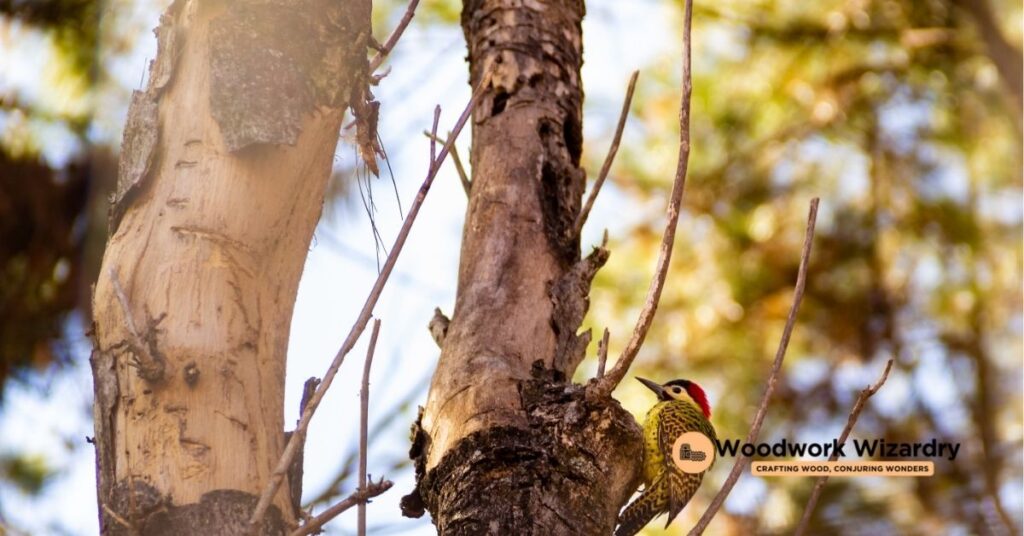
Building on our foundation, we delve into pre-treatment methods that enhance the preservation of green wood before the drying phase kicks in. These methods aim to minimize the risk of splitting, ensuring woodworkers enjoy a smoother project process.
Sealing the Ends
Sealing the ends of green wood plays a crucial role in preventing splitting. Since the ends of wood pieces lose moisture faster than other parts, applying a sealant, such as wax or a commercial end grain sealer, slows down moisture loss. Brush or spray these products directly onto the wood ends right after cutting, creating a moisture barrier. Effective sealants include paraffin wax, polyurethane, and specialized green wood sealants available in woodworking stores.
Controlled Drying Techniques
Adopting controlled drying techniques stands out as a preventative measure against cracking and splitting. Place green wood in a controlled environment where you can monitor and adjust humidity and temperature levels gradually. Using a dehumidifier or air conditioner in a small room or a storage container can create such an environment. Additionally, construct a simple tent with plastic sheeting over the wood, optimizing airflow and moisture control with fans or vents. Keeping the drying process slow and steady allows the wood to adjust without stress, significantly reducing the likelihood of splits.
Working with Green Wood
Building on our foundation of preserving green wood, we dive into the specifics of working with it directly. Precise techniques in carving, drilling, and sawing can significantly reduce the risk of splitting, ensuring the wood maintains its integrity throughout the creative process.
Carving Techniques to Minimize Stress
Applying the right carving techniques is crucial when handling green wood. Here are some effective strategies:
- Use Sharp Tools: Always carve with sharp knives, gouges, and chisels. Blunt tools require more force, increasing stress on the wood.
- Carve Along the Grain: Cutting along the wood grain instead of against it lowers the chances of the wood splitting. The grain direction guides the tool smoothly, reducing unwanted tear-out.
- Light Strokes: Apply light, controlled strokes. Heavy pressure can cause the green wood to crack under stress.
- Regularly Rotate the Workpiece: Changing the orientation of the wood helps distribute stress evenly, preventing splits. If the wood begins to show resistance in one direction, turn it and continue carving from another angle.
Drilling and Sawing Tips
Proper techniques for drilling and sawing are equally important to prevent splitting in green wood:
- Pre-drill Holes: Before inserting screws or nails, pre-drill holes slightly smaller than the fastener. This step reduces internal stress that can lead to splits.
- Use Fine-toothed Saws: Opt for saws with fine teeth for smoother cuts. Rough, fast cuts are more likely to tear wood fibers, causing splits.
- Maintain Saw Blades: Keep saw blades clean and sharp. Dull blades can catch and pull on the wood grain, increasing the risk of splitting.
- Support the Wood During Cuts: When sawing, ensure the wood is fully supported on both sides of the cut. This prevents the wood from bending and creating tension that could lead to splits.
By incorporating these carving and drilling/sawing techniques, we can minimize stress on green wood during the working process. Proper tool maintenance and technique play a significant role in keeping the wood intact, allowing us to achieve the best results in our woodworking projects.
Post-Treatment Strategies
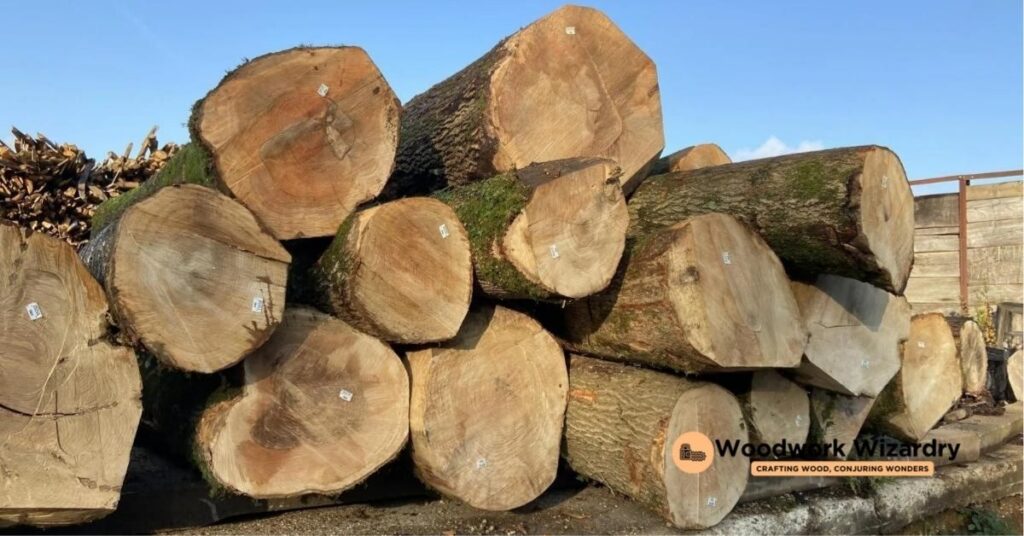
Building on the foundation of understanding wood splitting, tool use, and pre-treatment, we turn our attention to strategies that ensure the longevity and integrity of green wood projects post-treatment.
Regular Inspection and Maintenance
Regular inspection and maintenance stand paramount in preserving green wood. Inspecting green wood projects periodically allows for the early detection of cracks and splits. During inspections, look for signs of moisture loss, such as gaps or changes in the wood’s surface texture, focusing on end grains which are most susceptible to cracking. Maintenance involves applying additional protective layers or treatments as needed. If minor splits are found, applying a wood stabilizer can prevent further splitting. For larger cracks, using wood filler or epoxy resin ensures the integrity of the wood is maintained, especially if the project involves load-bearing structures.
Re-Sealing and Storing Wood Properly
Re-sealing green wood projects periodically extends their life and maintains their aesthetic appeal. Use a sealant compatible with the initial treatment to create a barrier against moisture and environmental elements. Apply the sealant evenly across all wood surfaces, paying extra attention to end grains and any areas previously treated for splits or cracks. Proper storage plays a crucial role in wood preservation. Store green wood projects in a cool, dry place away from direct sunlight and extreme temperature changes to minimize the risk of splitting. If possible, maintain consistent humidity levels in the storage area to further protect the wood from moisture fluctuations that can lead to splitting.
Troubleshooting Common Issues
In maintaining green wood projects, one sometimes encounters a few hurdles along the way. Here, we tackle solutions for common issues that may arise.
Dealing with Pre-existing Cracks
Identifying and addressing pre-existing cracks early is vital in green wood maintenance. Sealing them with a thin wood stabilizer proves effective for small fissures, facilitating deep penetration and reinforcing the wood’s structure. For larger cracks, applying a wood filler or epoxy resin offers a robust solution. These substances bond well with the wood, filling gaps and restoring the look and strength of the piece. After treatment, sanding the area smooth ensures the repair blends seamlessly with the surrounding wood. Regular monitoring for new or expanding cracks helps in preventing future damage, thereby preserving the wood’s integrity.
Adjusting Humidity and Temperature
Creating an environment with stable humidity and temperature levels is essential to prevent green wood from splitting. Use a dehumidifier or humidifier to control the moisture in the air if the workspace is too dry or humid. The goal is to mimic the wood’s natural environment as closely as possible to minimize stress that could lead to cracking. Maintain a consistent temperature within the space, avoiding extreme fluctuations that could cause the wood to expand or contract rapidly. Employing a digital hygrometer allows for precise monitoring of conditions, enabling adjustments as needed to maintain an optimal environment for the wood’s preservation. This careful control of humidity and temperature significantly reduces the risk of further splitting, ensuring the longevity of green wood projects.
Alternative Methods and Materials
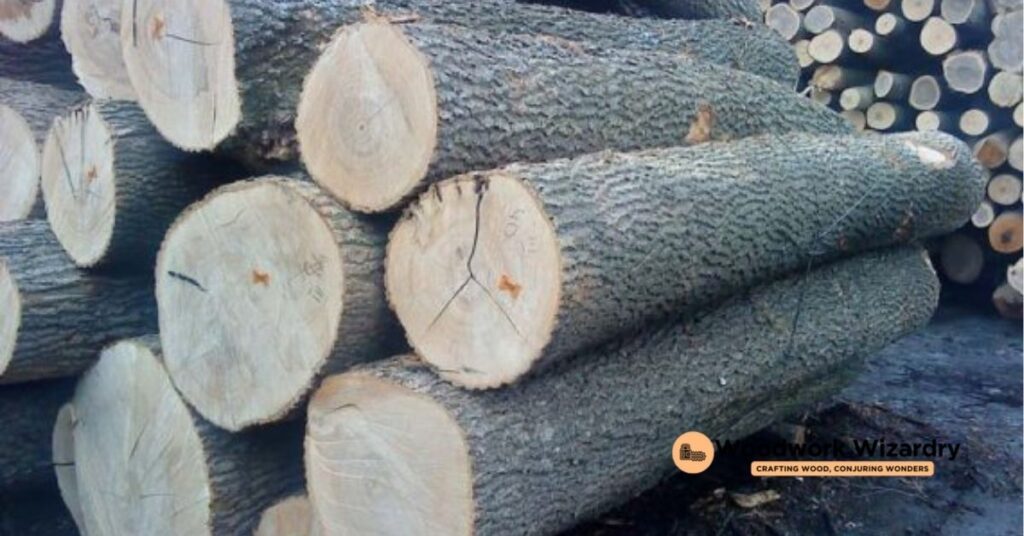
Beyond the previously discussed techniques, we explore additional strategies and resources to prevent green wood from splitting. These involve the use of chemical stabilizers and the application of traditional methods that have stood the test of time.
Using Chemical Stabilizers
Chemical stabilizers serve as a pivotal element in protecting green wood. These compounds penetrate the wood fibers, providing internal support that significantly reduces the likelihood of splitting as the wood dries. Common stabilizers, such as polyethylene glycol (PEG), work by displacing water within the wood, ensuring a more uniform drying process. Application involves soaking the green wood in a solution of stabilizer and water, often requiring several days to weeks depending on the wood’s thickness. Proper use of chemical stabilizers not only minimizes splitting but also preserves the wood’s natural color and texture.
Exploring Traditional Methods
Traditional methods for preventing green wood from splitting carry the wisdom of generations of woodworkers. These techniques include:
- Sealing the ends of logs with wax or latex paint immediately after cutting. This practice slows down moisture loss from the ends, which dry faster than the rest of the wood, reducing the risk of splitting.
- Controlling the drying process by storing green wood in a cool, shaded environment. A slow, gradual drying process helps in minimizing stress within the wood, thereby preventing splits.
- Using mechanical restraints, such as ratchet straps or clamps, around the perimeter of the wood. These tools apply external pressure to counteract the internal stresses caused by uneven drying, helping to keep the wood intact.
- Employing traditional joinery techniques that accommodate wood movement. Techniques like dovetail or mortise and tenon joints not only enhance the structural integrity of wood projects but also allow for natural expansion and contraction without causing splits.
By integrating chemical stabilizers with tried-and-true traditional practices, one can effectively mitigate the risk of splitting in green wood, preserving its beauty and utility for years to come.
Conclusion
We’ve explored a journey through the complexities of keeping green wood from splitting. It’s evident that a blend of modern and traditional techniques offers the best defense against this natural challenge. Remember, patience and attention to detail are your best tools in preserving the beauty and integrity of your wood projects. Let’s keep nurturing our skills and knowledge, ensuring our green wood creations stand the test of time. Happy crafting!
Related Posts:
- Top Beginner-Friendly Woods: Find Your Perfect Match for Woodworking
- Top 10 Best Woods for Turning: Softwoods to Exotics
- Ultimate Guide: How to Carve a Wood Spirit – Techniques & Care
- Prevent Splitting: How to Keep Green Wood Intact
- Ultimate Guide: How to Oil a Mini Chainsaw for Peak Performance
- Easy Guide: How to Untangle a Chainsaw Chain Safely & Quickly
- Is Woodworking Hard? Debunking Myths & Mastering the Craft
- What Is a Mandrel? Exploring Its Types and Industrial Applications
- Why Is Teak Wood So Expensive? Unveiling the Reasons

